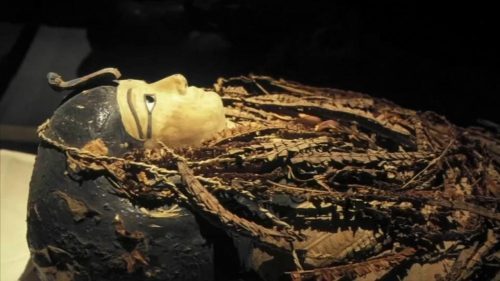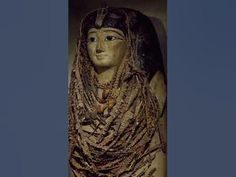
The royal mummies discovered in the 19th and 20th centuries have long been a source of fascination and study, providing valuable insights into the lives of ancient Egyptians, their burial practices, and even their health. However, one mummy has remained untouched by the hands of time, hidden away for centuries, shrouded in mystery – the mummy of Pharaoh Amunhotep I. In this groundbreaking article, we delve into the remarkable discovery of this ancient Egyptian ruler’s mummy and the insights gained through cutting-edge technology.
The Enigmatic Amunhotep I
Amunhotep I, whose name translates to “Amun is satisfied,” ruled from approximately 1525 to 1504 BCE during Egypt’s 18th Dynasty. He was a pivotal figure in Egypt’s history, a pharaoh whose reign marked a time of relative peace and prosperity. While Amunhotep I may not be as famous as some of his successors, he played a crucial role in shaping Egypt’s future.
A Journey Through Time
The mummy of Amunhotep I was discovered in 1881, among the royal mummies at the archaeological site of Deir el-Bahari in southern Egypt. This discovery opened a window into the past, allowing researchers and archaeologists to uncover the secrets held by this ancient ruler.
Technology has played a pivotal role in the investigation of Amunhotep I’s mummy. Advanced imaging techniques, such as CT scans and 3D reconstructions, have allowed researchers to digitally unwrap the mummy without physically disturbing its delicate state.

This non-invasive approach has revealed unprecedented details about the pharaoh’s mummification process, physical condition, and even potential causes of death.
Digital Unwrapping: A Technological Marvel
The process of digitally unwrapping the mummy involves using state-of-the-art imaging technology to create detailed, high-resolution scans of the mummy. These scans are then processed to reconstruct a virtual, three-dimensional representation of the mummy, layer by layer, akin to the traditional unwrapping process but without the associated risks of damage.
By virtually peeling away the layers, researchers have gained insights into the intricate mummification techniques employed during Amunhotep I’s time. The condition of the body, the presence of burial artifacts, and even the identification of potential diseases or injuries have become visible through this innovative approach.
Insights into Ancient Egyptian Culture
The digitally unwrapped mummy has provided researchers with a wealth of information about ancient Egyptian culture and burial practices.

The careful arrangement of amulets and artifacts around the body, the use of specific materials in the mummification process, and the presence of symbolic elements offer clues about the religious and cultural beliefs of the time.
Moreover, the examination of the mummy has shed light on the health and lifestyle of Amunhotep I. Through the identification of physical ailments or signs of aging, researchers can piece together a more comprehensive understanding of the challenges faced by this ancient ruler.
Preserving the Past for the Future
The digital unwrapping of Pharaoh Amunhotep I’s mummy represents a harmonious convergence of technology and archaeology, allowing us to explore the mysteries of the past while preserving the delicate artifacts for future generations. This non-invasive approach sets a precedent for the respectful examination of historical remains, ensuring that the rich tapestry of human history remains intact for continued study and appreciation.

In conclusion, the digitally unwrapped mummy of Pharaoh Amunhotep I stands as a testament to the enduring curiosity of humanity and the incredible advancements in technology that enable us to unravel the mysteries of ancient civilizations. A

s we continue to explore the past through modern innovation, the enigmatic legacy of Amunhotep I remains an invaluable piece of the puzzle in understanding the vast tapestry of ancient Egypt’s history.





